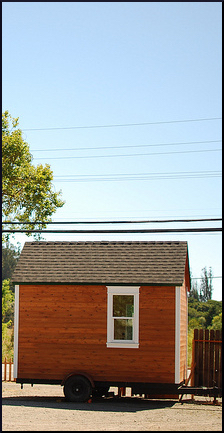
Amazon finally relieved everyone’s stress by announcing the location of its much-vaunted second headquarters. Surprise! It’s not one new site, but two — New York City (specifically, Long Island City, which is in the borough of Queens) and Crystal City, in Arlington County, Virginia, adjacent to Washington, D.C.
Remember when Amazon published its shortlist of 20 cities who were the top contenders for HQ2? The cities whose administrators most obsequiously bowed and scraped, offering every conceivable enticement if only the humungous corporation would consent to enter their gates and honor their constituents by looting, plundering, and pillaging to the utmost? (More about that later.)
The point here is, out of the top 20 municipalities that remained in the running, five of those places are also on the list of the country’s largest homeless populations. One of the ultimate winners, New York, also happens to be the American city with the most people surviving in public. Needless to say, this is not a prize anyone should want to win.
But in a way, New York has nothing to lose. It already is the urban area with the largest number of people who have been failed by the American promise. Hundreds of thousands of additional people could be displaced from their homes, and New York would still be the city with the most people whose very existence is a crime.
The Northern Virginia area, including Crystal City, currently ranks as the place with the fifth largest total of people experiencing homelessness. What happens after Amazon takes over is anybody’s guess.
What we do know is that both the newly-revealed choices already have lots of residents who make way more than the national median income, who can afford the already-inflated housing prices. And as more upper-pay-grade employees migrate to those two areas, it will remove even more people from the possibility of finding places to live, and exacerbate the homeless situation.
The contenders and the prize
Looking back to the previous stage, Amazon’s 20-item shortlist had also included Los Angeles (second in homelessness), Boston (ninth), and Philadelphia (10th). Another city with the most homeless people, ranking in third place, is Seattle (which was not in the running for HQ2, because HQ1 is already there). Seattle has been living with the effects of Amazon for almost a decade, so it’s a pretty good indicator of what the two new not-quite-headquarters may look forward to.
Word on the street about Seattle, garnered from social media comments, is not encouraging. We hear that some lower-echelon workers, like custodians and cafeteria workers, are forced to live in vans. Even mid-level employees like teachers, college secretarial help, and nurses have to live so far out of town that they face commutes of two hours each way. With 80% of the buildable land in the city allotted to single-family houses and only 17% permitted to have “density,” i.e. apartments, there is very little hope that more affordable housing will magically appear.
The process by which Seattle was convinced to welcome Amazon is described as a “policy failure” and an “outright scam” that takes money away from public infrastructure and small businesses, while the process of searching for the HQ2 location is said to be nothing but a “publicity stunt.” Citizens protest that the paltry taxes paid by Amazon and its employees are negligible compared to the enormous amounts of tax those entities have been relieved of.
Another complaint is that only bottom-rung Amazon jobs are filled by locals, so the native van-dwellers miss out on the chance to have actual walls around them again. Meanwhile, people from elsewhere are recruited for high-paying positions, and the scarce housing is taken up by newcomers. One person warned the HQ2 prospects in these words:
Amazon isn’t bringing you 50,000 high paying jobs. They’re bringing 50,000 people with high paying jobs to where you currently live. This won’t help your community, but will replace it.
Twitter user @tokyo_todd joked:
At least those highly paid people will need to shop locally, at least until somebody figures out a way to have every single household item you need shipped straight to your… oh wait…
An anonymous commentator confirmed,
It reminds me of when I worked at Google Los Angeles and the office moved to Venice Beach. Local restaurants and gyms put up ads saying “Welcome Google!” But we had free food and gym on campus and barely got out.
Let’s end on a relatively positive note from HtH reader and Seattle resident Phil Polizatto:
Seattle is special, though it has its faults. We have a terrific mayor, a very socialist city council, women pretty much run this city! And Mayor Gurken’s primary goal is to get rid of homelessness. Surprisingly, she is making headway. The appearance of “tiny homes” seems to be the answer. Communities of tiny homes. Affordable and quick to build. Cost about 40K fully equipped. Finding neighborhoods willing to accept such communities are rare, but there are some progressive neighborhoods willing to give it a try.
Reactions?
Source: “10 US Cities With The Largest Homeless Populations,” WorldAtlas.com, 02/19/18
Photo credit: Nicolas Boullosa via CC BY


